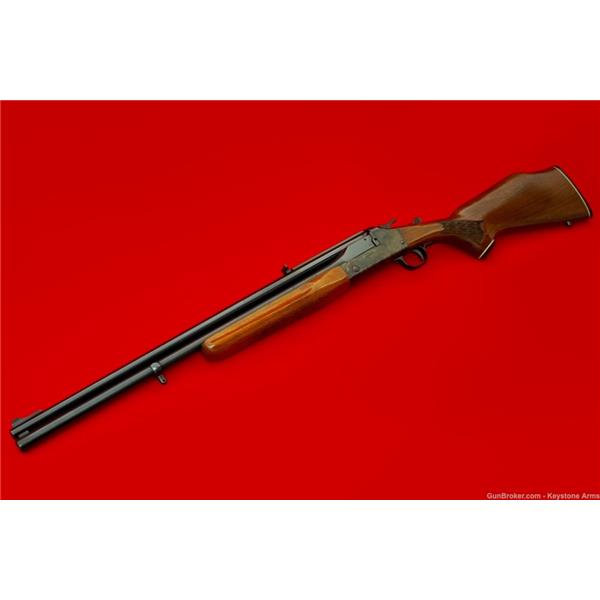


410, 20-guage, and the ever-popular 12-gauge. The chamberings themselves produced a myriad of options including rifle calibers in not only 22 S/L/LR, but also 22 WMR. Savage over time improved the on-frame barrel selector and moved it to the hammer to make it more reliable, dropped the tenite moldings in favor of uncheckered walnut, and added other chamberings. The double gun was a handy 41-inches overall and 7-pounds flat. 410 would take up to 3″shells and had a full choke. 22 barrel would accept S, L and LR rimfire rounds and the same length. Taking the Stevens combo gun, Savage retained the concept of a standing breech, break open rifle over shotgun combination gun, which utilized a rebounding hammer and rear pushing extractors. The same year the Stevens 22-410 went out of production, the Savage 24 was introduced. Savage had been (and still is) the parent company of Stevens since 1920, making it easy to see the import of the Savage 24’s concept. In 1950, the gun went out of production with Stevens. The information below is a brief account of those groupings as originally drafted by odell23. During it's lifespan Savage continually made changes to the Model 24's design resulting in numerous model and series groupings. The Army Air force ordered 15,000 of them for use as aircrew survival rifles with a Tenite (an early thermoplastic) stock. The Savage Model 24 combination rifle/shotgun was in production for nearly 70 years (1938-2006). Stevens put the handy little marvel into production in 1938 with the appropriate moniker of the Model 22-410. 22 rimfire rifle barrel with a single sight, hammer, and trigger. This firm came about with a combination gun with a smoothbore.


 0 kommentar(er)
0 kommentar(er)
